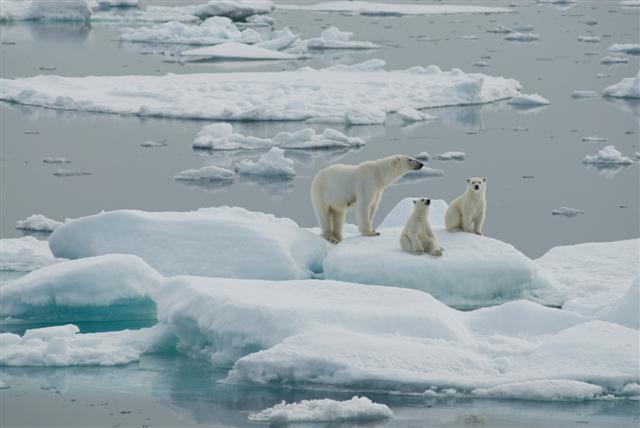
Arctic sea ice extent remained lower than average in January, and just within two standard deviations of the long-term average.
Arctic temperatures remained above average, even as cold winter air embraced North America. The retention of more sea ice in September 2013 has increased the overall thickness and volume of the ice pack compared to recent years. Antarctic sea ice remains significantly more extensive than average.
Arctic sea ice extent continued to track below average during January, remaining just within two standard deviations of the long-term average. The average extent for January was 13.73 million square kilometers (5.30 million square miles). This is 800,000 square kilometers (309,000 square miles) less than the 1981 to 2010 average, and 160,000 square kilometers (61,800 square miles) above the previous record low for the month of January set in 2011.

Sea ice extent remains below average in the Barents Sea, the Sea of Okhotsk, and the Bering Sea. While recent winters have seen more extensive sea ice in the Bering Sea, this is the first January since 2005 for which below average conditions have been observed there. Extent is close to average in Baffin Bay, the Labrador Sea, and the Gulf of St. Lawrence.
However, the Arctic temperatures remain above average. In Arctic Archipelago of Svalbard, differently from previous years, the average temperature has been 1.6°C which is almost 15°C above average. At this time of year, temperature in this part of the Arctic should remain 16 °C below zero.
Researchers conclude that key Arctic locations are facing more rains and warmer temperatures.
The Russian Ministry of Emergency Situations reported that the temperature in the Arctic increased around 7°C in this century.
